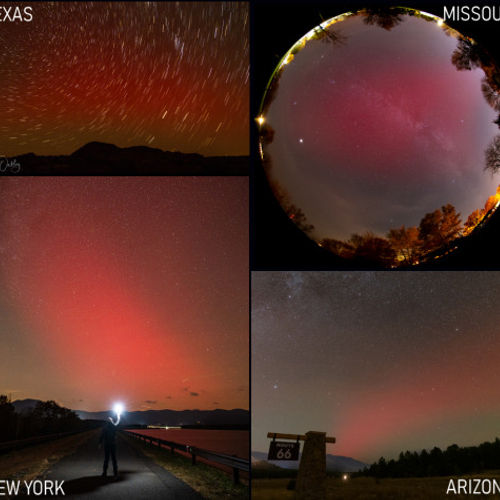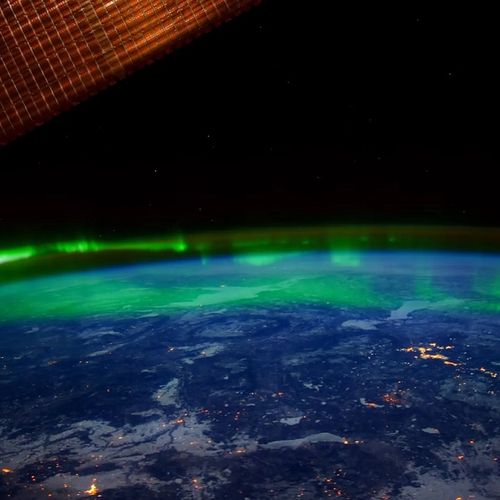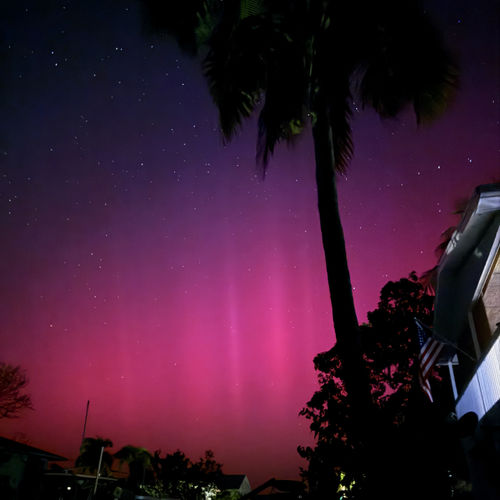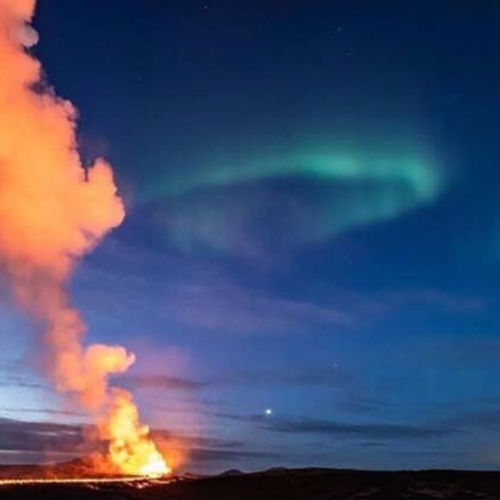
| Added | Wed, 08/11/2023 |
| Источники | |
| Дата публикации | Wed, 08/11/2023
|
| Версии |
SAR — Stable Arc Red: Stable red auroral arcs (SAR) at mid—auroral latitudes are an example of electron heating in the upper part of the Earth's ionosphere (400 km). The phenomenon is unexplored and extremely rare - it is almost impossible to observe it with the naked eye, it happens extremely rarely.
Scientists observe similar phenomena in a geophysical observatory using highly sensitive equipment. But last weekend something happened that provoked the global observation of this type of glow of oxygen molecules almost all over the world!
Heating leads to the appearance of red glow layers of the atmosphere located very close to the surface of the Earth. An increase in temperature causes a red glow with a wavelength of 630nm, exciting the lowest layers of atomic oxygen. A temperature of several thousand Kelvins was recorded in SAR arcs, and the main source of energy in the occurrence of this type is the thermal conductivity of the magnetosphere.
auroras occur when charged particles of the solar wind from flares are directed by the lines of force of the Earth's magnetic field and excite molecules in the upper atmosphere. In contrast, SAR occur much lower and are associated with the glow of oxygen molecules, which are heated by an annular electric current.
Why only oxygen molecules begin to glow from the current is not known for certain. However, this explains the red hue of the light. Scientists are sure that this phenomenon happens all the time. Right during geomagnetic storms, the Earth's field is strained so much that it becomes noticeable in the night sky.
In addition to SAR, during strong magnetic storms in the Earth's atmosphere, another phenomenon is observed — STEVE. It looks like a ribbon of multicolored light. There is evidence that the arcs of STEVE and SAR are related phenomena.
Scientists believe that a similar event occurred in 1859, when extreme phenomena occurred on the Sun and in the magnetosphere of our planet, which ended with the most powerful magnetic storm in the entire history of observations. This storm caused intense auroras in uncharacteristic latitudes, and in Europe and North America there was a malfunction of the telegraph. Experts in the study of the Earth's magnetosphere say that such events occur once every 500 years.
In 1859, the technosphere of humanity was still being formed, so the damage was relatively small.
If such a superstorm happens now, the consequences may be more catastrophic - an unusual burst of red lights may be a harbinger of just such a catastrophic event that may occur in the very near future.
SAR arcs were discovered in 1956, at the beginning of the space age. The researchers did not know what it was, and unwittingly gave them a misleading name: "Stable Red Auroras" or arcs of SAR. In fact, SAR arcs are neither stable nor auroras.
Auroras appear when charged particles fall from space, entering the atmosphere and causing it to glow. SAR arcs are formed in different ways. They are a sign of leakage of thermal energy into the upper atmosphere from the Earth's ring current system – a doughnut-shaped circuit through which millions of amperes are fed across our planet.
The artist's idea of the ring current of the Earth, quiet (left) and active (right)
"On November 5, the ring current was amplified by a strong geomagnetic storm for many hours, while the energy was dissipated in these SAR arcs," says Jeff Baumgardner from the Center for Space Physics at Boston University. "It was a global event. Our cameras recorded the activity of the SAR arc from Italy to New Zealand."
Новости со схожими версиями
Log in or register to post comments









